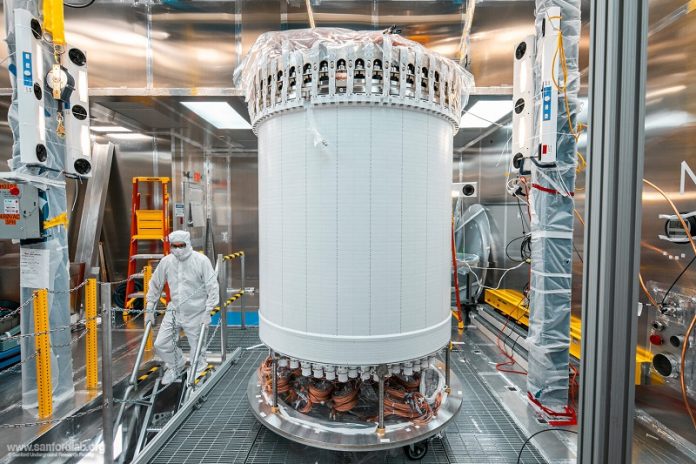
Scientists are getting closer to understanding dark matter, one of the biggest mysteries of the universe, but it’s proving to be more elusive than ever.
Recent findings from the LUX-ZEPLIN Dark Matter Experiment (LZ), the world’s most sensitive dark matter detector, have provided new insights into a leading dark matter candidate known as weakly interacting massive particles, or WIMPs.
However, the results suggest that WIMPs are incredibly difficult to detect.
The LZ experiment, based at the Sanford Underground Research Facility in South Dakota, has gathered data that is nearly five times more sensitive than previous studies.
This data, presented at the TeV Particle Astrophysics 2024 Conference in Chicago and the LIDINE 2024 Conference in São Paulo, shows that WIMPs rarely interact with ordinary matter.
This confirms how challenging it is to trace dark matter, a mysterious substance that is thought to make up most of the mass in the universe.
The LZ project is led by the Lawrence Berkeley National Laboratory in the US, with participation from over 250 researchers from several countries, including the UK, Australia, Portugal, South Korea, and Switzerland.
Among them are physicists from the University of Bristol, who play a key role in this international effort.
Professor Henning Flaecher, a physicist from the University of Bristol, highlighted the importance of this research: “Our findings show significant progress in the search for WIMP dark matter.
We’ve explored a wide range of possible masses and interaction strengths, but so far, dark matter remains elusive. This search is a marathon, not a sprint, and with LZ still to collect much more data, there’s still a lot to discover.”
The LZ experiment has not yet found evidence of WIMPs with a mass above 9 GeV/c², where 1 GeV/c² is roughly the mass of a hydrogen atom. To achieve its full potential, the experiment needs to run for up to 1,000 days.
The current results are just a small part of what the researchers hope to achieve, proving that the years of design and construction have paid off.
Detecting dark matter is extremely challenging because it doesn’t emit or absorb light, making it invisible to traditional detectors.
The LZ experiment uses a 7-tonne liquid xenon detector, located nearly a mile underground, to try and catch the rare interactions between dark matter and ordinary matter.
The underground location protects the experiment from cosmic rays and other background radiation, which could interfere with the results.
Researchers from the University of Bristol, including Christopher Wright and Nathan Pannifer, have been working deep underground in South Dakota as part of their Ph.D. studies.
They contribute to the maintenance of the Outer Detector, which helps filter out background signals that could mimic dark matter interactions.
Professor Flaecher emphasized the importance of eliminating background radiation in these experiments. The LZ team has worked tirelessly to ensure that the liquid xenon is as pure as possible, removing contaminants through a complex process that took years.
These efforts are crucial for the success of the experiment, and the latest results show that everything is working in harmony.
Despite the challenges, scientists remain hopeful that LZ will eventually provide the answers they are seeking, bringing us one step closer to unlocking the secrets of dark matter.
Source: University of Bristol.



